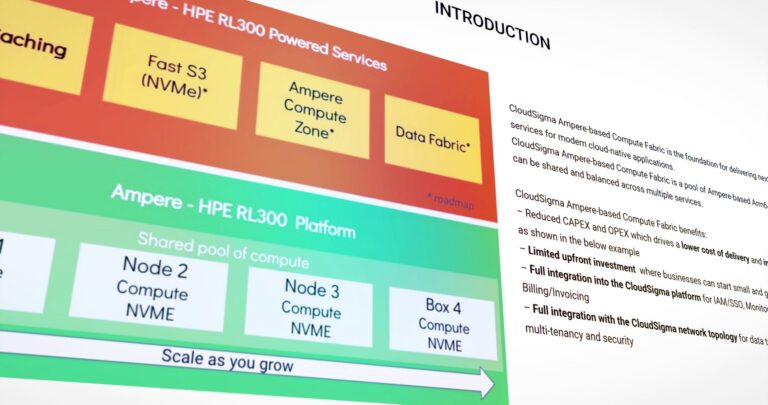The importance of R&D cannot be overstated.
Not only can it help companies create new products and adapt to the changing demands of customers, it also gives organizations a competitive edge and allows them to grow their market share.
However, beyond reinventing products, services and processes, enterprises that have the resources to bring in innovation, also have a social responsibility. Innovation underpins our society, creates new jobs (while reducing the need for others) and can provide solutions to improve our health, boost security and preserve the environment.
In the face of the climate crisis, what role does innovation have to play?
Climate change has never been more of a pressing issue, and we’ve already seen some of its devastating effects, including wildfires in California and excessive heat in Europe last summer. According to the UN, if we don’t drastically slow global emissions, temperatures will rise by above three degrees Celsius by 2100, causing further irreversible damage to our planet and having catastrophic effects on human lives.
It’s clear that something must change. We need to limit carbon pollution, invest in green energy and switch to more sustainable solutions. Innovation is about creating the technology of the future – we need to create technology for a greener future.
The practice of innovation should be responsible and have a positive impact. It should not be focused on creating new technology for the sake of it, but rather assess the usefulness of new developments and whether they will have a quantifiable positive impact. The benefits of innovation should go beyond the company making the investment and be shared by the wider community. In the context of climate change, this means lowering energy use, reducing waste and consuming fewer natural resources.
What kind of innovation can have a positive impact?
Low technology (or low-tech in opposition to high-tech) is a concept of progress and innovation that is more sustainable, robust, and economical in terms of materials and energy. The ideas on which it is based originated in the 1970s, which saw many players promoting low-tech practices and solutions. The modern concept is not an outright rejection of technology, but rather a process of assessing how we decide which technology is the best solution to a particular problem.
There are times when the same outcome can be achieved using a technology that is simpler and consumes fewer natural resources. Many modern technologies, including mobile phones, use materials like copper, cobalt, lithium, and rare earth elements. Not only are these in short supply, but their extraction also requires significant amounts of energy. When the same outcome can be achieved, it makes sense to go with the ‘low technology’ option, rather than misspend employee time, consume energy, and produce waste by choosing the high-tech solution. Another advantage of low technology solutions is that they are often more resilient – and due to their simplicity, they are usually easier to fix when things do go wrong.
Imagine a home that gets cold in the winter. The family may decide to use blankets and jumpers to stay warm, rather than turning the heating on. This is an example of how a low-technology solution (and in this case, a societal change freely adopted by the family) can save energy and money while achieving the same end goal.
This principle can be applied outside of individual behaviors to business processes. Here we have an interesting recursive example of integrating ‘good enough’ technology to foster the detection and creation of communities that will encourage the emergence of new (low-tech) innovations. Alcatel-Lucent Enterprise have created an innovative application relying on the concept of ‘Conversation Fingerprinting’. This application uses a combination of traditional AI and NLP to analyze conversations and content shared on an enterprise network and detect when different groups are discussing similar topics. The application is not only able to identify and compare topics of conversation, but it does this without having any knowledge of the content of the conversation, meaning that the confidentiality of employee data is respected. This increases efficiency within a company, allowing employees working on similar projects to connect and share expertise. The high-tech approach would have been to use Generative AI, which is very good at performing this kind of task; however, the energy and computing demands of Generative AI are excessively high. The simpler technology proposed by ALE based on ‘Conversation Fingerprints’ can achieve the same result with far less carbon impact.
What kind of approach does this require?
Organizations need to change their mindset around innovation, getting rid of the idea that more technology is always better. The process of innovation needs to include assessment of the usefulness and applications of new technologies, both within corporations and throughout wider communities. This doesn’t mean reducing spending on R&D but having more discernment in the choice of technology to invest in and thinking creatively about how to leverage existing technologies. Adding these kinds of constraints could also be an important motivating factor for R&D engineers, who will be tasked with delivering more value for users, with less.
Not all problems can be solved by a low technology solution and high-technology innovations such as AI have potential to help us find important sustainability solutions.
However, this potential needs to be assessed and companies should only adopt AI solutions if they can prove there will be a tangible benefit. Companies have a responsibility to take a systematic approach regarding the development of products and services, taking into account the market they address. The overarching target, whether AI is involved or not, should be “delivering products for the good”, and this cannot be achieved without involving all stakeholders, including employees, experts, communities, customers and end users to help make decisions.
About the Author
Emmanuel Helbert is Innovation Manager at Alcatel Lucent Enterprise. We are Alcatel-Lucent Enterprise. Our mission is to make everything connect with digital age networking, communications and cloud solutions. Our solutions are tailored to our customers’ industries providing built-in security and limited environmental impact. We offer flexible business models: in the Cloud, on premises, and hybrid. Over 100 years of innovation has made us a trusted adviser to more than 830,000 customers around the world.


